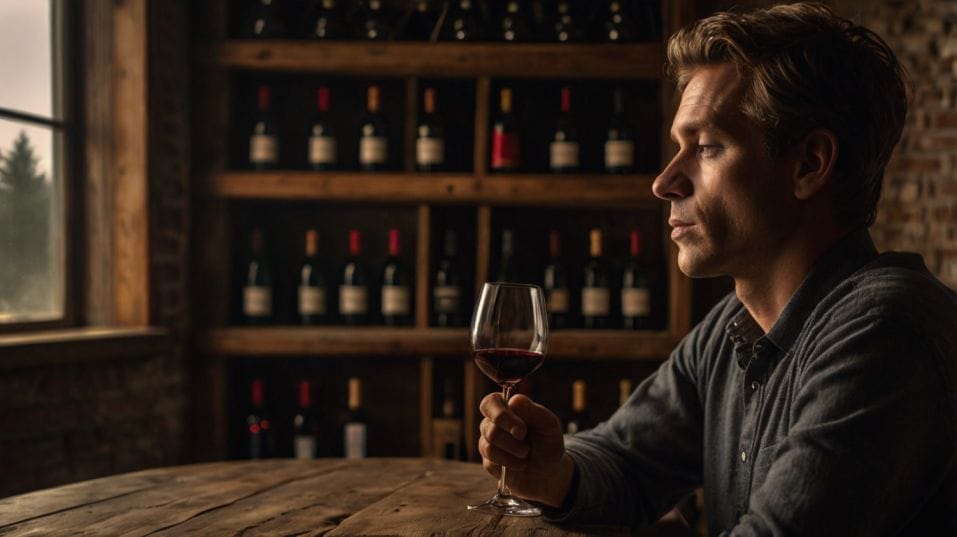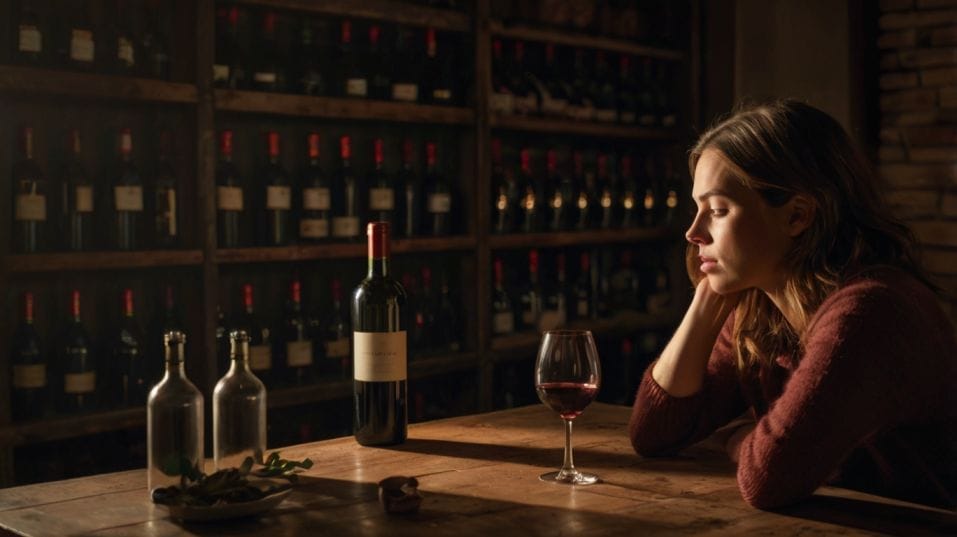How to Smell Wine Like a Sommelier (Without Pretending)
Want to smell wine like a pro? Learn how sommeliers do it — with intention, not pretense — and unlock deeper flavor in every glass.

Ever wonder why wine lovers make such a big deal about the smell? It’s not snobbery — it’s the key to unlocking flavor. Before the first sip, your nose is already gathering clues about what’s in the glass.
And learning to smell like a sommelier isn’t about memorizing fancy terms or impressing anyone. It’s about slowing down, tuning in, and noticing more. If you're serious about wine, this is where your journey truly starts.
Why Smelling Wine Matters More Than You Think
Flavor and aroma are not separate. When you eat or drink, 70 to 80 percent of what you “taste” comes through your nose.
The experience starts before the wine hits your tongue. Aromas signal freshness, style, age, and even flaws. They also give you clues about how the wine was made and where it’s from.
So when you learn to smell well, you’re not just “doing the wine thing” — you’re tuning into the architecture of taste itself.
You start noticing details that others miss. You drink more slowly, with more curiosity. And you begin to connect dots between the wines you like and the reasons you like them.

Step One: Don’t Hover — Get In There
When a sommelier smells wine, they’re not being delicate. They're getting data. So should you.
Raise the glass to your nose and get close. Really close. Hovering a few inches above the rim does almost nothing. You want to place your nose in the glass and inhale steadily through both nostrils.
Keep your mouth closed at first. Then try smelling again with your mouth slightly open — you may pick up different notes as air flows more fully through your retronasal passage.
Give it a few seconds. Then pull back. You’re smelling for shape, for identity. What’s the general feeling? Sharp and citrusy? Deep and brooding?
Bright and floral? Not every aroma will be obvious, and that’s okay. The goal isn’t to name it all. It’s to notice what’s there — and what isn’t.
Step Two: Swirl With Purpose, Not Drama
Swirling isn’t just a ritual. It’s chemistry. You’re encouraging the wine to release volatile aromatic compounds, which rise from the surface and concentrate near the rim of the glass.
Swirl gently — a controlled wrist motion on a flat surface works best. After 5 to 10 seconds, smell again. The difference can be subtle or dramatic.
Swirling may bring forward fruit, expose deeper earthy notes, or soften any sharp edges from alcohol or sulfur.
You may find the wine smells completely different now. That’s not your imagination. Wine is alive in the glass — and your attention is part of what activates it.
Step Three: Listen to the Wine, Not the Vocabulary
You’ll hear a lot of people talking about wine in terms like “black cherry,” “wet stone,” or “forest floor.” That kind of language can help — but only after you’ve developed your own internal references.
Start With the Big Picture
Start with broad categories. Is the wine mostly fruity? If so, what kind of fruit: red, dark, dried, tropical? Does it lean more floral, earthy, herbal, or spicy?
Are there dairy, nutty, or toasted aromas? Are you picking up something clean and sharp — or something wild and rustic?
There’s no pressure to be precise. In fact, trying too hard to “get it right” can disconnect you from your own sensory instincts.
Great smellers trust their nose first, words second. The better you get at noticing what’s there, the more the words will come later.
Think in Sensory Environments
A good trick: think in terms of environment. What does the wine’s aroma remind you of — a farmer’s market? A stone path after rain? A bakery at dawn? Memory and place often unlock more useful insight than clinical flavor wheels.
Understanding Where Aromas Come From
Every wine carries a layered mix of aroma sources:
- Primary aromas come from the grape itself — these are the fresh fruit, floral, or herbal notes.
- Secondary aromas come from winemaking — such as yeasty, buttery, or lactic notes from fermentation or oak aging.
- Tertiary aromas develop with age — dried fruit, leather, mushroom, earth, or spice.
You don’t need to categorize these every time, but knowing they exist helps explain how some wines can smell both clean and complex, fresh and mature.
Over time, you’ll begin to recognize which kinds of aromas come from which stages of a wine’s life.
Temperature, Glass, and Timing — Why They Matter
Even the most expressive wine can smell flat if it’s too cold or too warm. Chill mutes aroma. Excess heat dulls it. As a rule of thumb, serve white wines slightly warmer than fridge-cold and reds slightly cooler than room temperature.
Your glass also shapes how aromas behave. A good glass has a bowl wide enough to let the wine breathe, and a rim narrow enough to concentrate aromas. If you’re just starting out, one quality, tulip-shaped glass is all you need.
Also: give the wine time. Many wines — especially young reds or structured whites — benefit from air.
Ten or fifteen minutes in the glass can reveal aromas that were totally hidden at first pour. Keep returning to the wine. Treat it like a conversation, not a transaction.
Learn to Smell Flaws (and When They Matter)
A big part of smelling like a pro is knowing when something is off.
Common Flaws You Might Notice
- Cork taint (TCA): Smells like wet cardboard or a musty basement.
- Oxidation: Dull, flat aromas; may smell like bruised apple or stale nuts.
- Volatile acidity (VA): A sharp, vinegar-like edge — sometimes acceptable in small doses, especially in natural wines, but overpowering in flawed ones.
- Brettanomyces (“Brett”): Barnyard, leather, or even Band-Aid aromas. Divisive — some drinkers love the rusticity, others find it distracting.
Smelling regularly helps you calibrate. You’ll start noticing what’s intentional and what’s not. And if a wine doesn’t smell right to you — trust that.
Final Thoughts: Smell With Purpose, Taste With Confidence
If you want to understand wine — not just drink it — smelling is where the work (and joy) begins. It sharpens your senses, trains your palate, and gives you a personal connection to what’s in your glass. Every sniff is a small act of discovery.
So next time you open a bottle, slow down. Smell first, before you even think about taking a sip. Swirl. Smell again. Let your instincts lead. You’re not faking anything — you’re paying attention.
And the best way to keep learning? Try something new tonight. A grape you’ve never heard of. A region outside your comfort zone.
Pour it, smell it, and really explore it. That’s how great wine habits begin — one quiet, curious breath at a time.




